Digital printing has been behind major changes in the printing industry. Now the issue is integrating the new possibilities and using the various printing formats flexibly and efficiently. Since 1953 Saueressig has supported printing operations, brand companies and packaging manufacturers as a full-service provider, and is additionally an partner for digital printing.
By Alfons Strohmaier
Personalization and individualization are indispensable megatrends from today‘s marketing world, particularly if a company wants its brands to win over the “Omega" generation of millennials and those born later as loyal consumers. What began with start-ups and niche sup-pliers enabling young people to create their own personal muesli or chocolate mixtures has meanwhile grown into a major challenge for multinational brand article companies and for medium-sized confectionery manufacturers. This is because in contrast to the pioneers who sell their products at significantly higher prices, the established companies must now find solutions for customized mass production. The manufacture of individualized products and their singular processes contradicts in many points mass production with its scale effects, high levels of automation and low prices. In this regard, “Mass Customization” is the magic phrase that conglomerates such as Coca-Cola, Danone or Ferrero have used in relation to this prevailing trend.
Digitalization, “Smart Data” and today’s extreme interconnectivity now enable companies to recognize the wants and needs of customers and to make their purchase decisions as simple as possible. But success with mass customization also requires the ability to adapt production chains flexibly with as little disruption as possible. On this point, it is the packaging sector above all, and therefore also the printing segment, that are faced with ensuring the highest possible level of flexibility while maintaining a strict value-for-money ratio.
After all, brand products continue to be produced in the accustomed batch sizes, differing initially only in different packaging formats and sizes as well as through the unique character of each individual packaging. Digital printing, which has rapidly developed further in only a few years, offers unbelievable possibilities in this respect. Saueressig GmbH & Co. KG illustrated this in its workshop “Mass Customization and Digital Printing”, conducted in conjunction with HP Germany.
Saueressig is a full-service provider of international renown for the entire packaging industry and a central contact, also in a complex constellation of the graphic chain. Since 2008 part of the Matthews International Division SGK, the company has also been conducting research in relation to the optimum integration of digital printing in the machinery fleet with flexography, offset printing and, as needed, intaglio printing. To this end, the company has erected its own brand centre at its headquarters in Vreden/Germany supporting customers in the entire packaging process in relation to the greatest possible flexibility, as well as the equally important factors of cost efficiency and control. Saueressig‘s related range of products and services extends from design and artwork to colour management up to printing acceptance and finished packaging.
Kirsten Nowak-Sorgenicht, Saueressig Global Sales Director and head of company‘s brand centre in Vreden, noted that the life cycles of products will be shortened and order sizes will shrink in the conventional brand business. Subsequently, brand article companies must rely increasingly on campaigns with specific time limits and which are related to particular occasions in order to continue achieving increased sales. She explains: “Digital printing allows brand article companies to interact with consumers and thereby exploit new market potentials”. The top priority in all this is that the brand image remains consistent throughout every printing format and all of the packaging materials.
Ingo Beutler, Saueressig Global Manager Reproduction Packaging, took the example of colour management to illustrate the new challenges and solutions for this situation and to point out: “Under no circumstance should there be any colour deviation between a brand’s individually designed packaging for a limited edition and the normal mass produced articles”. As a service provider, Saueressig makes sure that style guides and brand specifications are complied with and that all producers have a binding reference point for proofing and data. This ensures the faster introduction of products onto the market and recognition of the product at the Point of Sale, and thereby the continued “Brand Experience” of the consumers.
The control over the brand and its appearance maximizes the brand value for every point of contact with consumers. Saueressig also provides consultation services on efficient work practices and innovations aimed at reducing costs throughout the entire graphic supply chain. The company additionally focuses on developing streamlines and production processes to avoid superfluous double-processes and to reduce lead times. Synchronization and data sovereignty are supervised by the centralised production unit, the technical support team, on-site employees as required, web solutions and process optimization. The team in Vreden is constantly working on the creation of a long-term vision for the future in order to be able to continuously pass on improved productivity and cost benefits.
Jörg Hunsche, Business Development Manager at HP Germany, and Sabi Paska, Solution Consultant at HP, used numerous examples in the workshop to demonstrate the creative possibilities of digital printing for brand article companies. In only a few years, HP Inc. has used the brand HP Indigo to revolutionize digital printing through constant continued development. Today, it can offer a broad range of digital printers for labels, folding cartons, flexible packaging and shrink wraps. These include the HP Indigo WS 6800 Digital Press for labels and the HP Indigo 30000 Digital Press, a sheet-fed printer for folding cartons.
Hunsche cited Liquid Electrophotography (LEP) as a unique technology, a process which uses an equal electrostatic charge of the imaging cylinder to apply the thermal offset transfer onto the blanket cylinder and direct contact from the offset blanket onto the substrate. With seven ink works and the largest selection of printing colours available in digital printing, the HP Indigo provides the largest possible colour space with HP Electro-Ink. Additional special colours such as silver also create special effects. The quality of the HP Indigo technology certifiably matches 97 % of Pantone colours.








